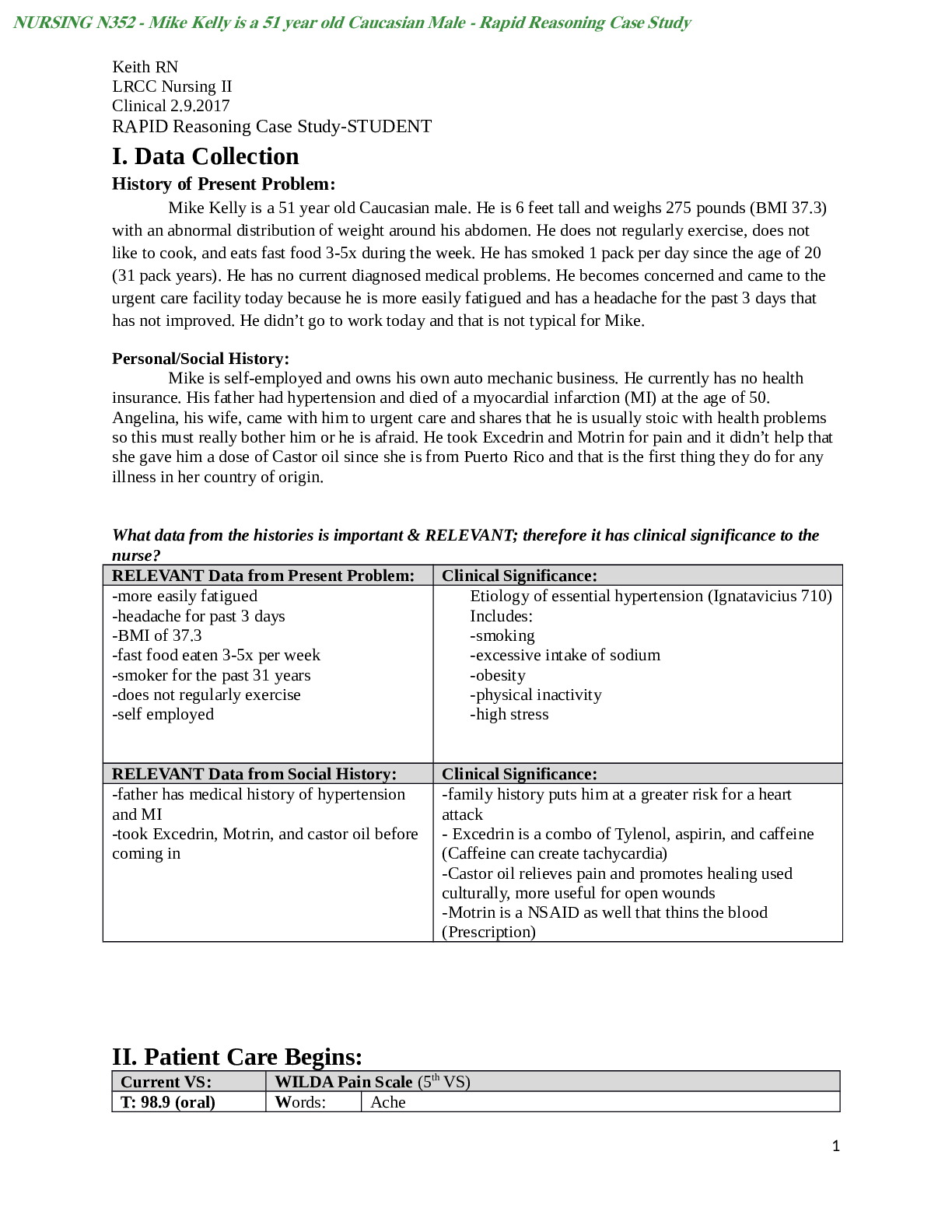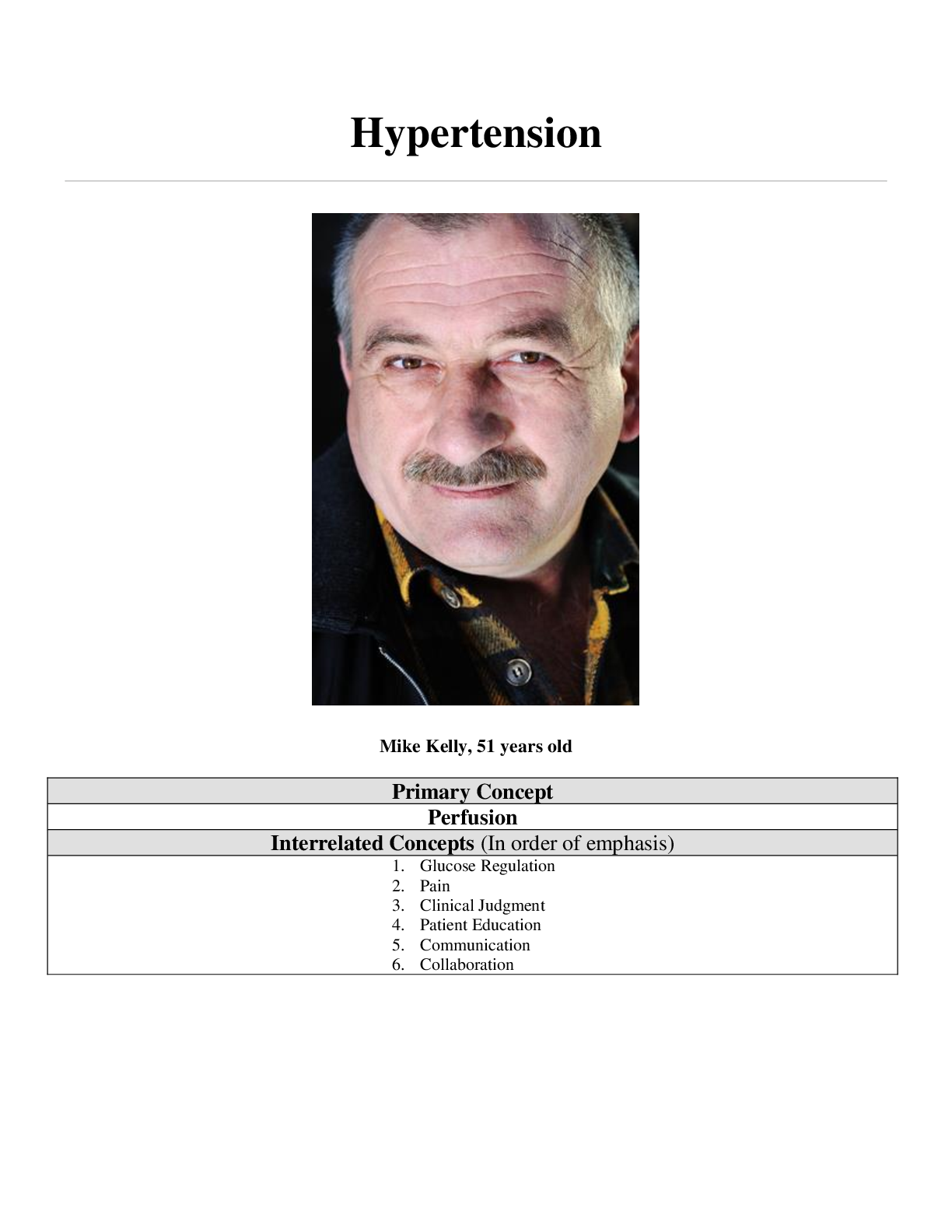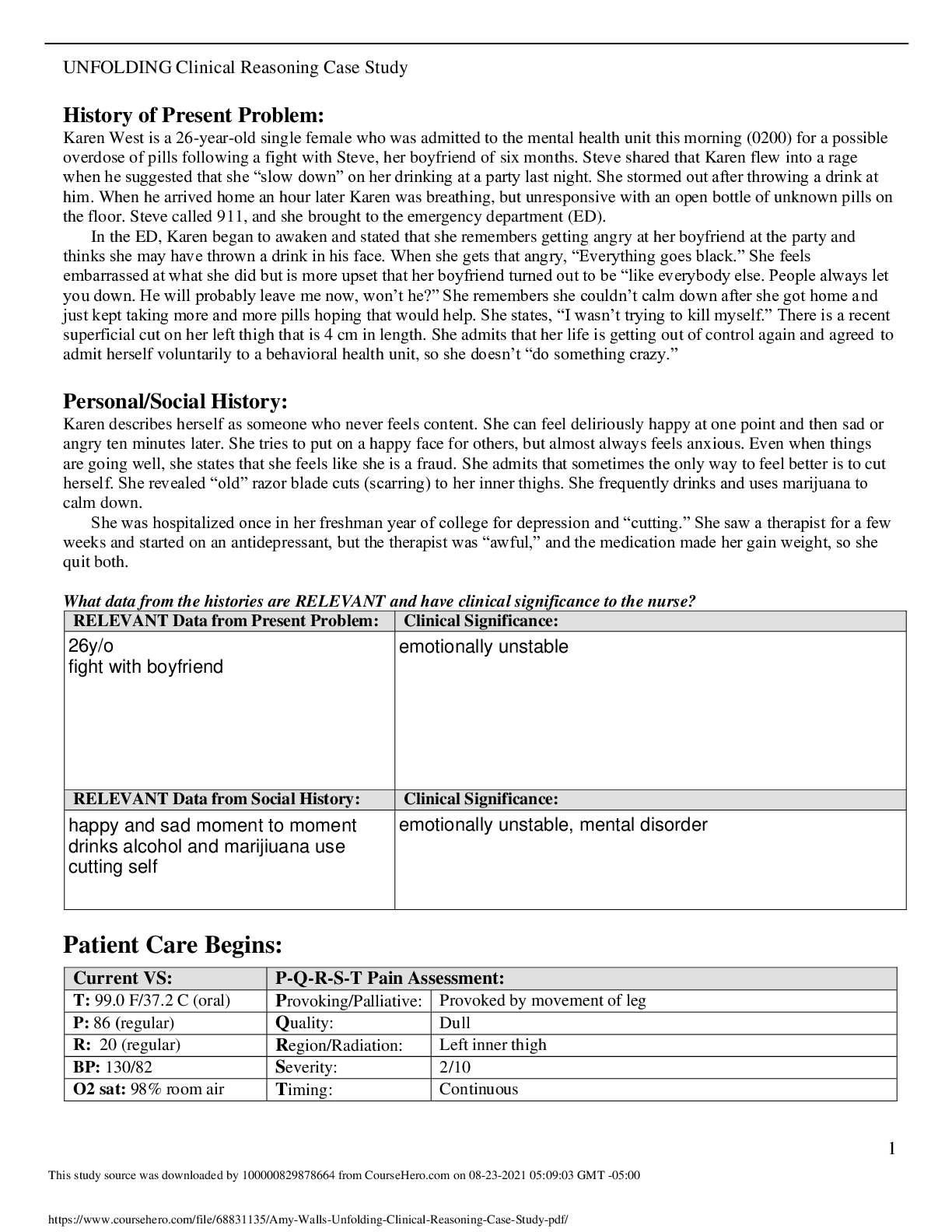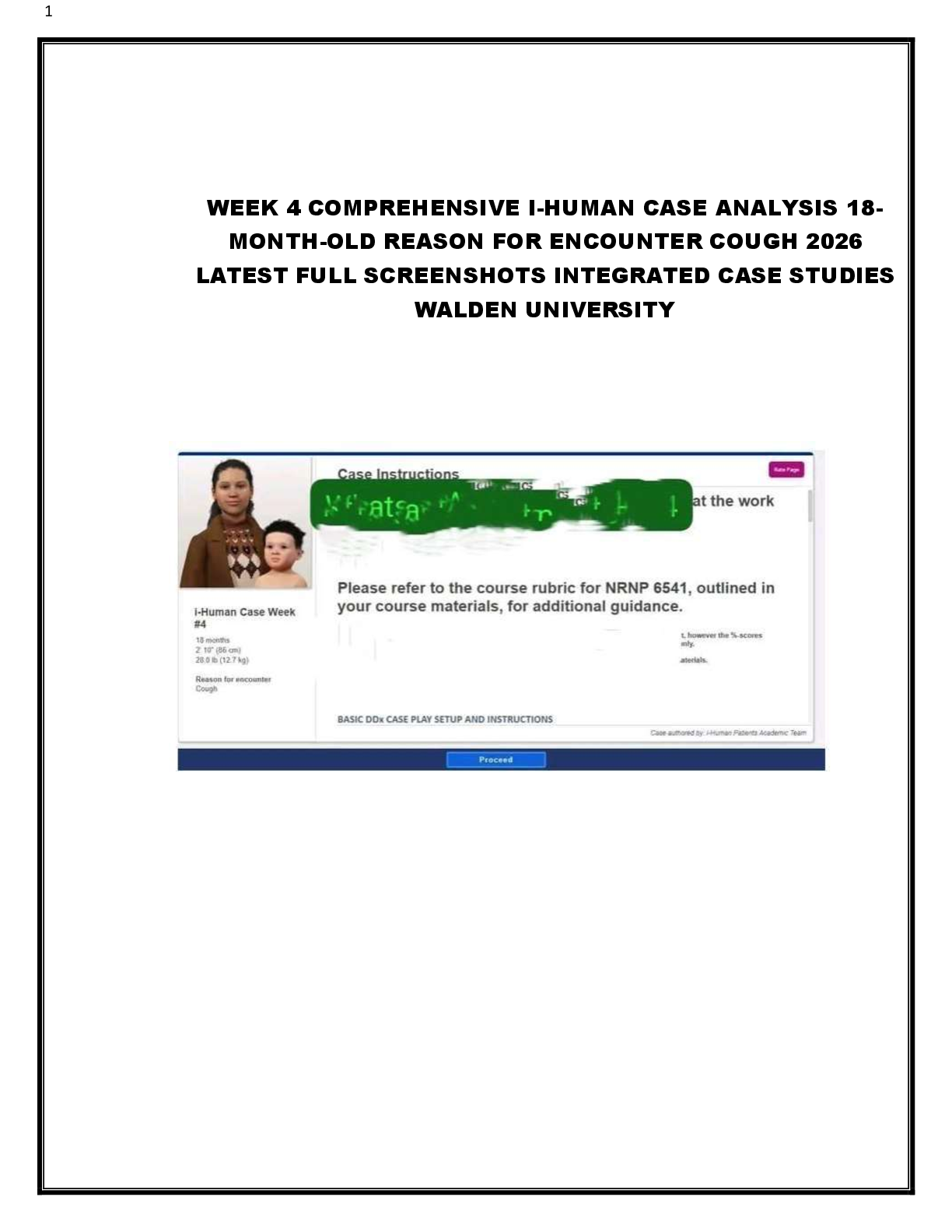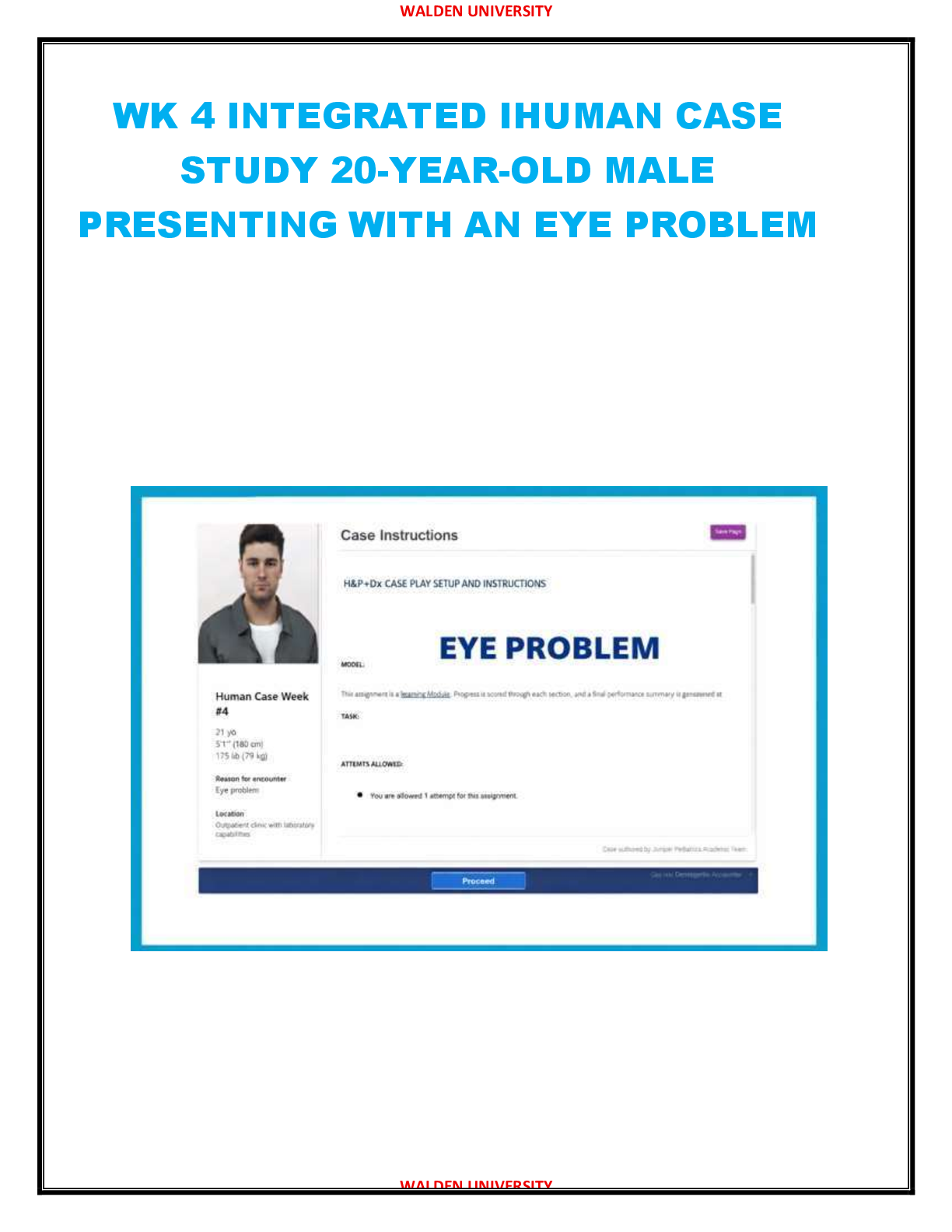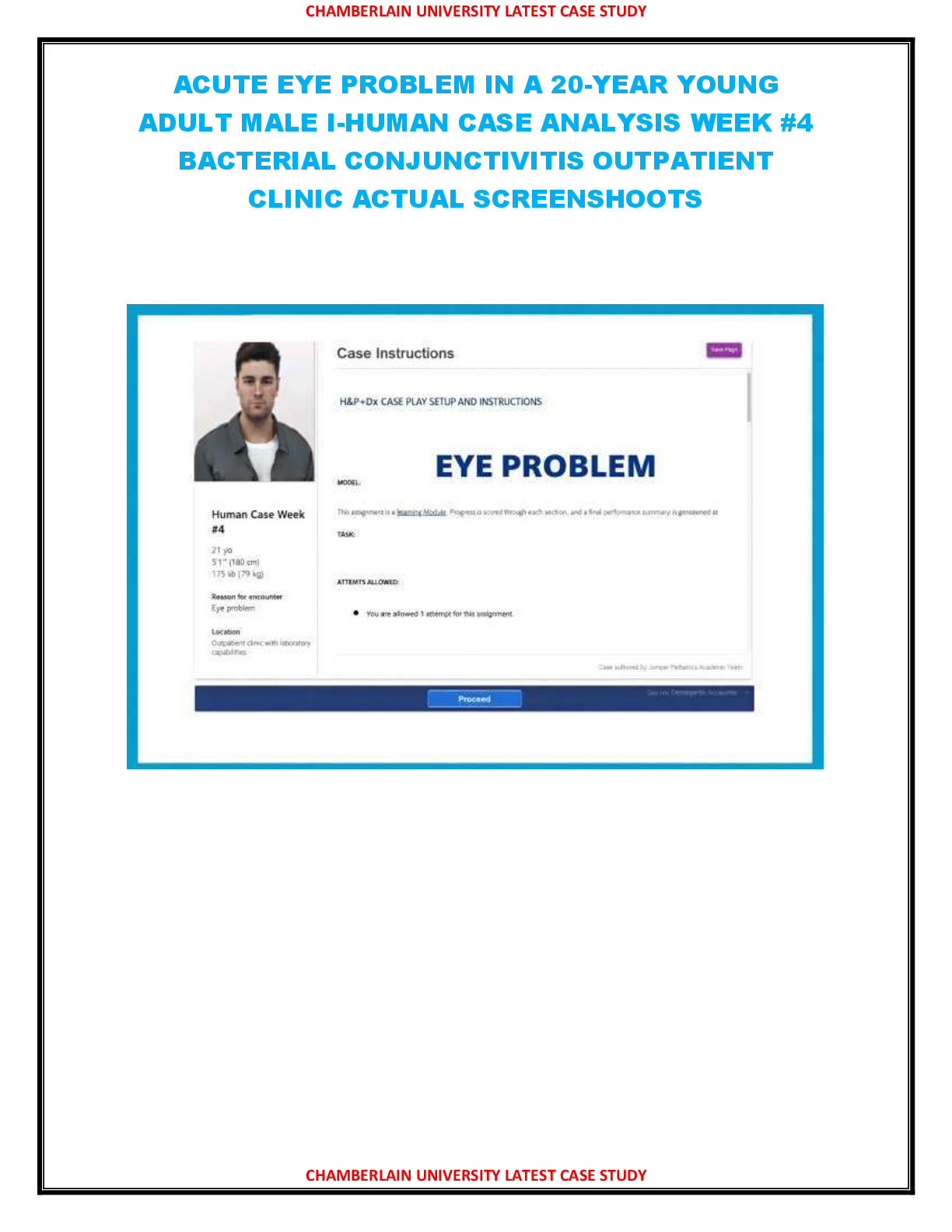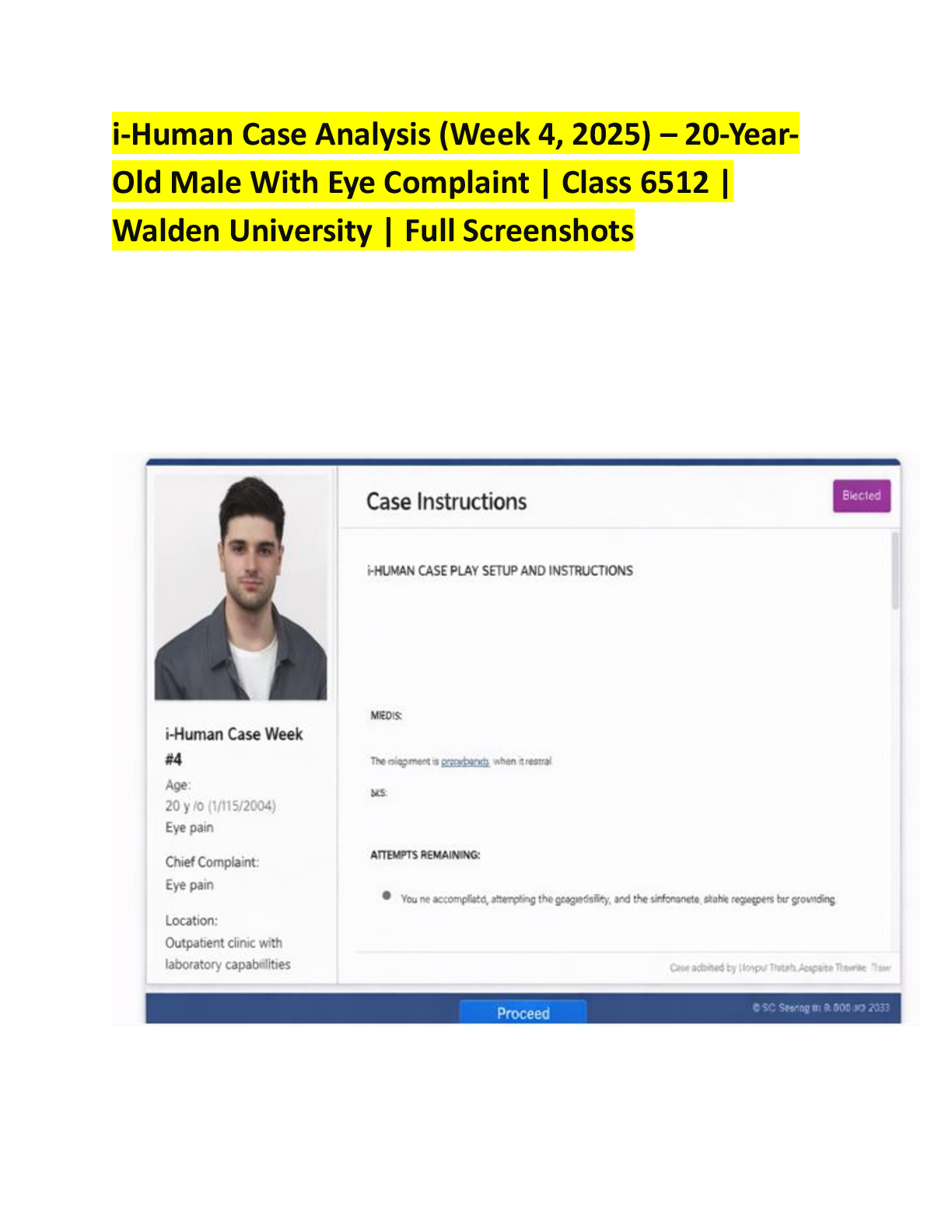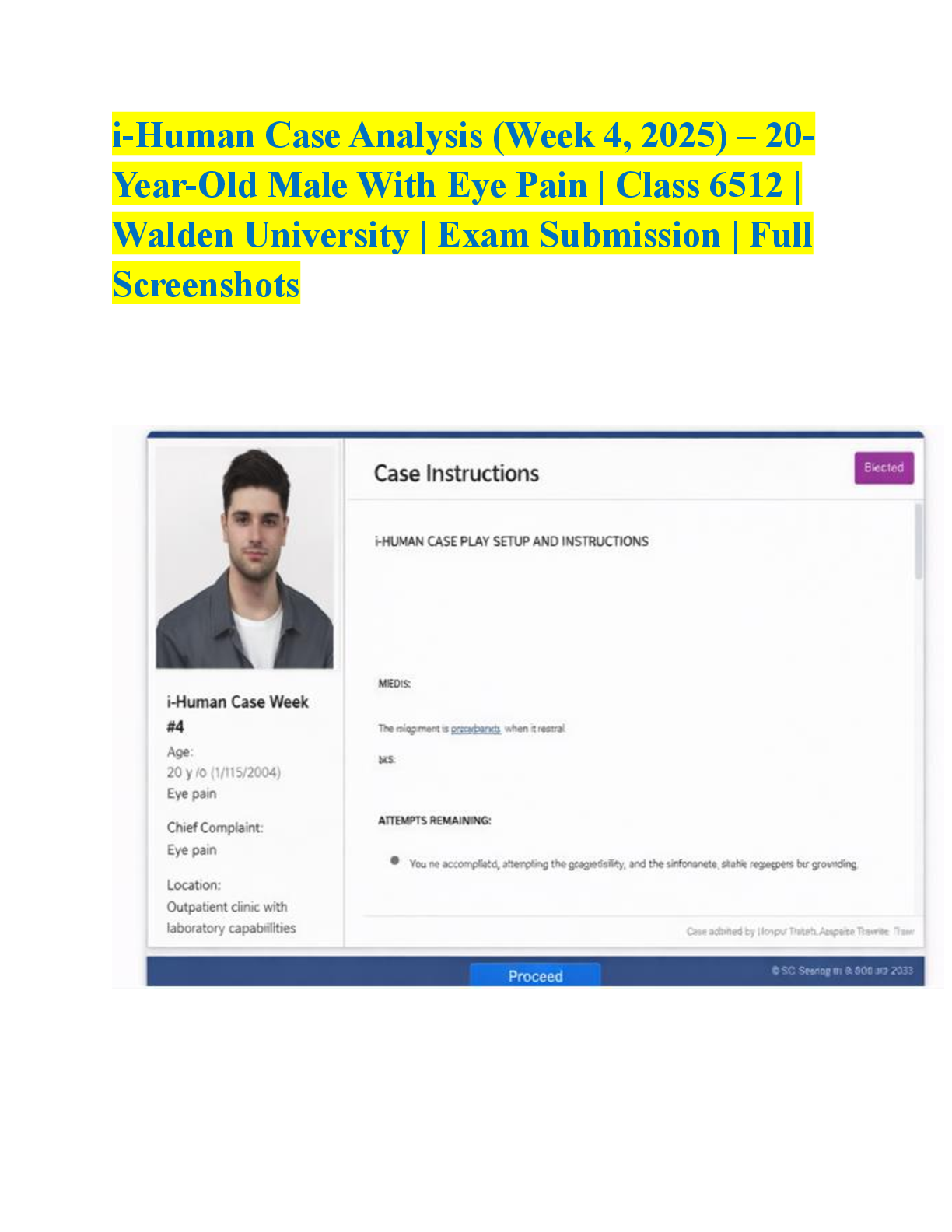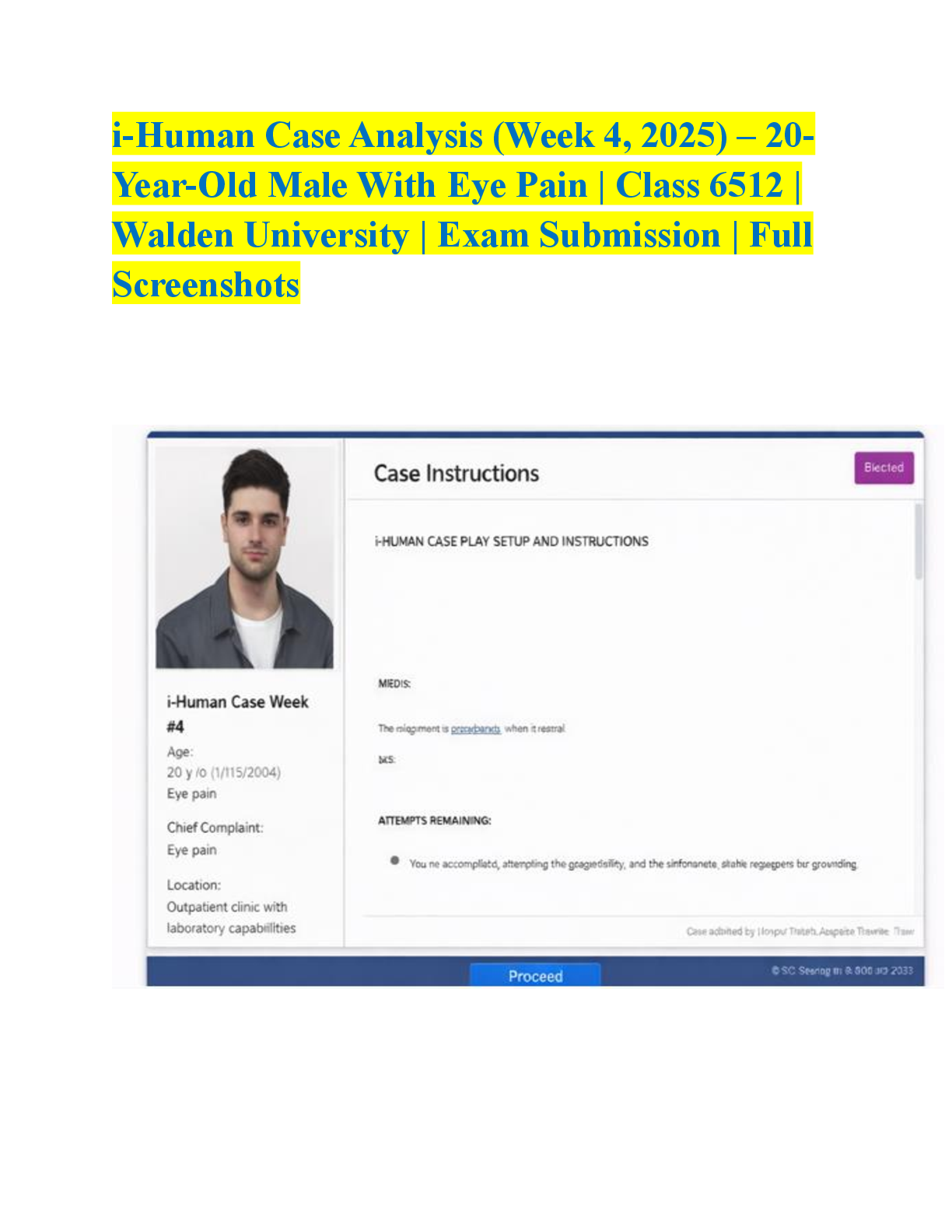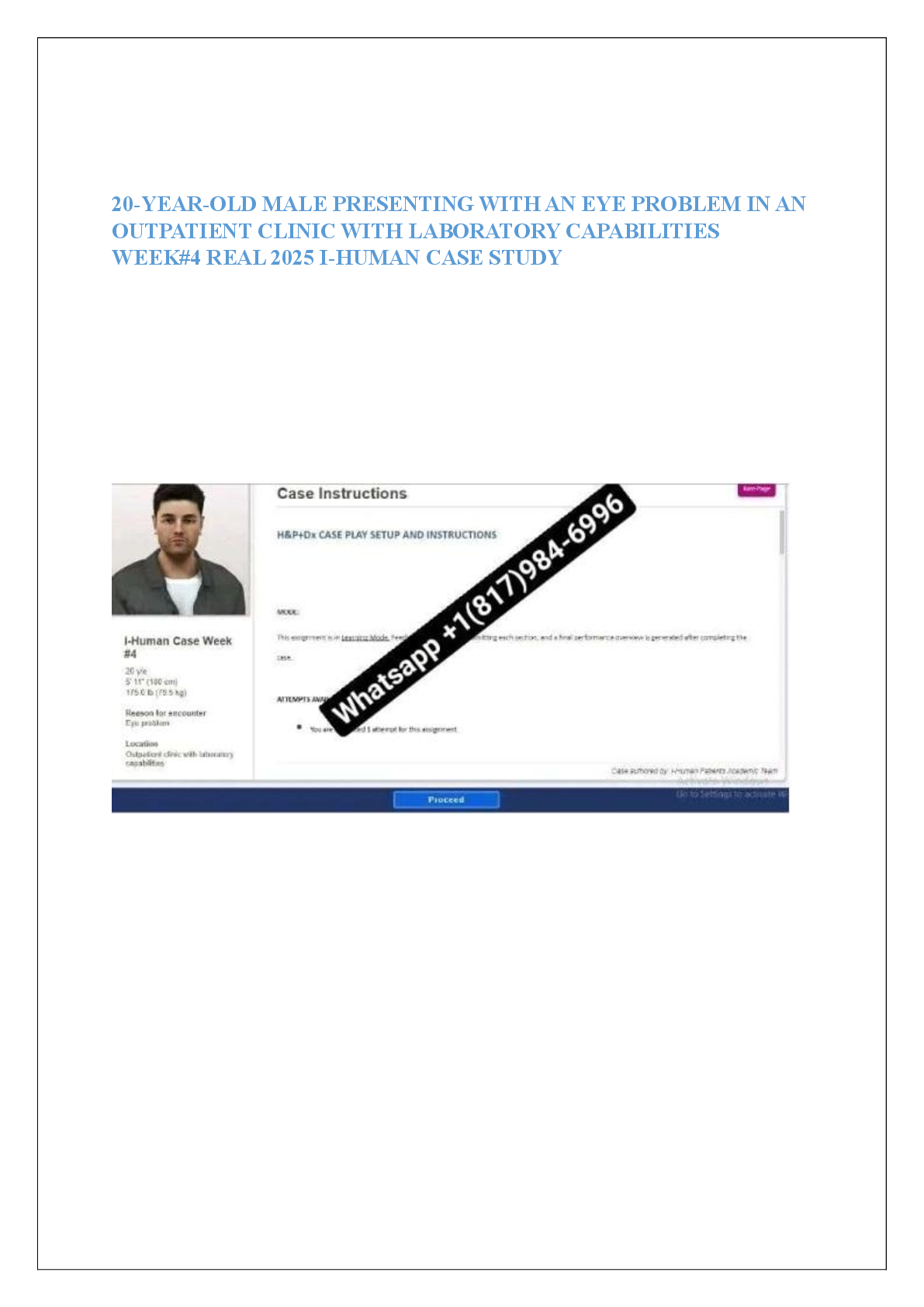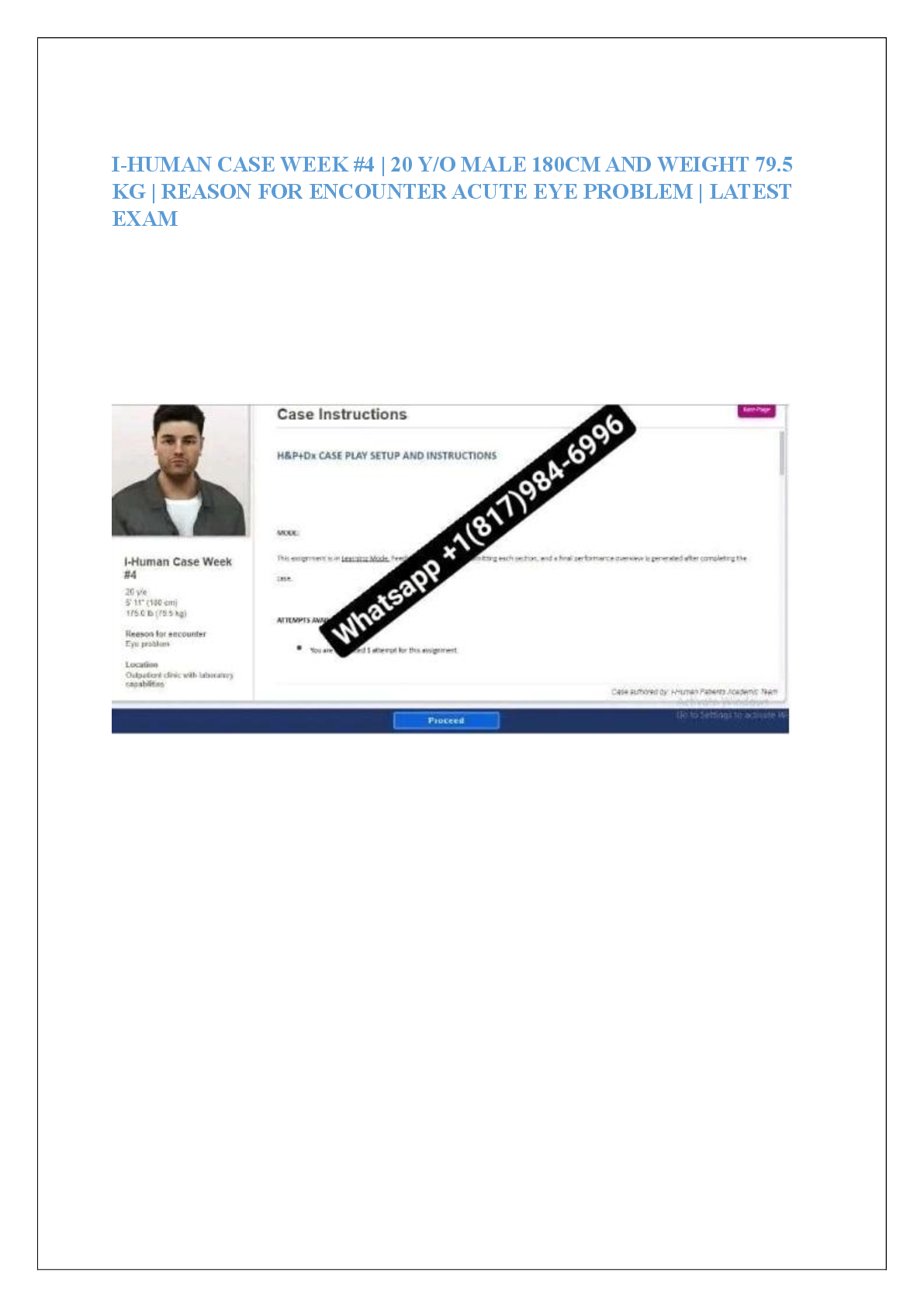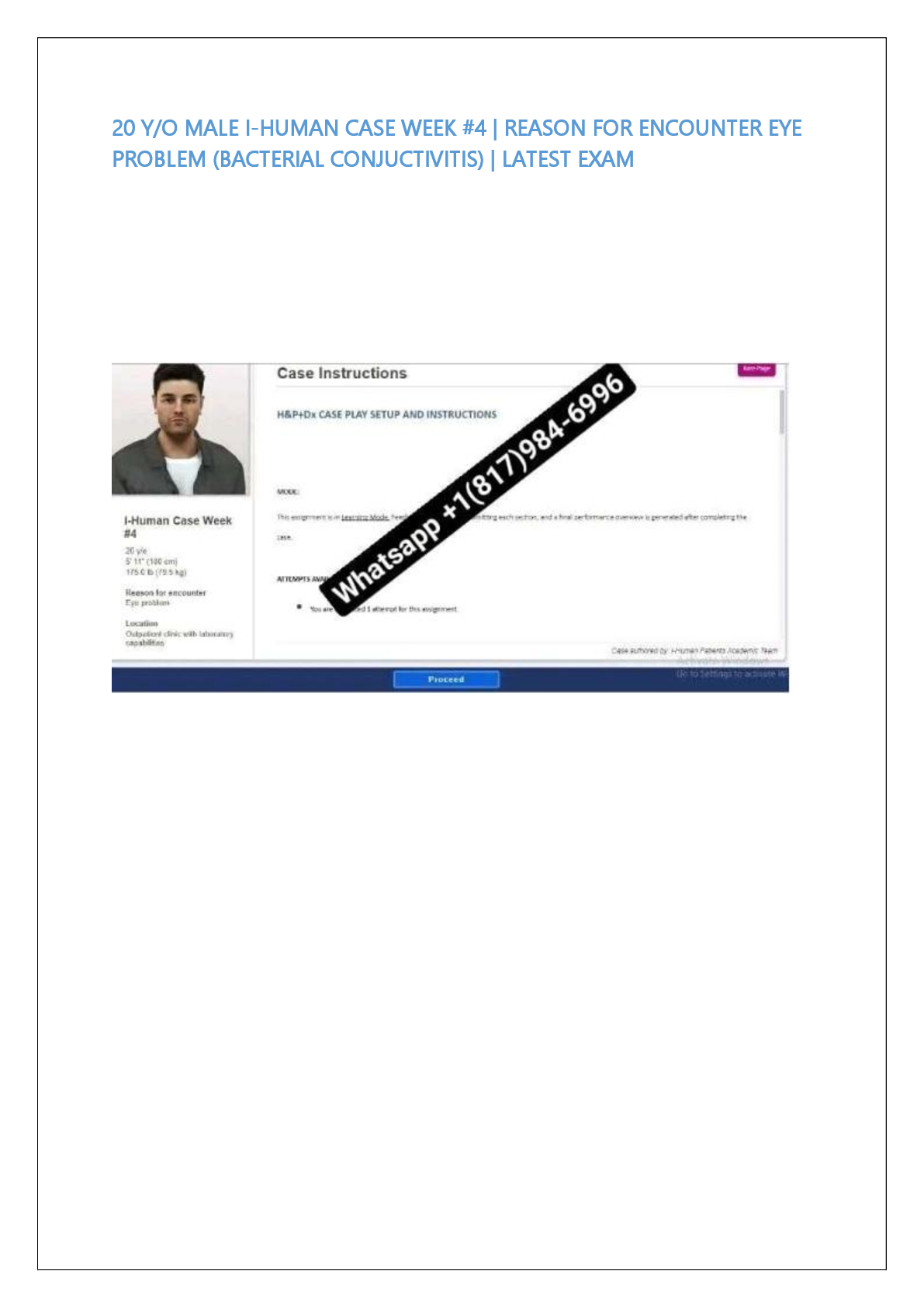Chemistry > CASE STUDY > CHM1025 Cumlative Exam Study Guide (All)
CHM1025 Cumlative Exam Study Guide
Document Content and Description Below
CHM1025 Lecture 1 Notes |Brewer | 01.09.2018 • Chemistry is the study, composition, structure, properties and reactions of matter. o Matter is anything that takes up space. • There are many ... fields of chemistry including: o Organic o Physical o Analytical o Inorganic o Biochemistry o Medicinal • Chemical: a substance that always has the same composition and properties no matter where it is found. • The Scientific Method includes the following steps: o Observation: qualitative and quantitative data collection. o Hypothesis: an educated guess o Experiment: a procedure that tests a hypothesis to make a discovery. o Theory: confirmed hypothesis supported by the data collected from the experiment o Law: generalized rule based on observations supports by theories Ex: The Second Law of Conservation of Energy: energy cannot be created or destroyed. Composition of Matter: • Pure Substance: matter that has a fixed/constant chemical composition. Example: Salt (NaCl – Sodium Chloride) • Element: matter made up of only one type of materials. This substance cannot be broken down further. Each atom in a sample of an element is identical. Example: Carbon. o Elements can be metal (shiny and good conductors) or nonmetal (dull and poor conductor). Example: Copper is a metal. Oxygen is a nonmetal. • Compound: molecules containing atoms of two or more elements that are chemically combined in fixed proportions. Example: Salt (NaCl – Sodium Chloride). Methods to represent elements and compounds: • Element Symbols: shortened version of an elements formal name. Instead of Iron the symbol is Fe. The first letter is always capitalized, the second letter is lowercase. • Chemical Formula: describes the composition of a compound using the element symbols to show the makeup and subscripts to indicate the proportions of the elements presence. o Water – H2O: water has two hydrogen atoms and one oxygen atom. The subscript is the number 2 shown next to H. • Mixture: two or more substances physically mixed together but NOT chemically altered. o An example of this would be trail mix. Everything in the trail mix can be separated and the chemical composition of each item is not altered. • Mixtures can be homogenous which is a mixture with uniform composition and distribution of substances. o Heterogeneous mixtures do not have a uniform composition or distribution. The mixture may also be a suspension or consist of more than one phase. Representations of Matter: • Atom: the smallest unit of an element which retains its unique chemical properties. • Molecule: two or more atoms chemically bound together in a discrete arrangement with fixed proportions. Physical States of Matter: • Solid: definite shape and definite volume. Solids have strong attractive forces. Example: a desk or cup. • Liquid: definite volume, but no defined shape; takes the shape of its container. Moderate attractive forces. Example: water • Gas: no definite shape or volume. Gases have weak attractive forces. Example: Oxygen or Carbon. • Aqueous solution: substance dissolved in water as homogenous solutions. Example: soda or tea. ......................................................................continued...................................................................................... [Show More]
Last updated: 3 years ago
Preview 1 out of 71 pages

Buy this document to get the full access instantly
Instant Download Access after purchase
Buy NowInstant download
We Accept:

Reviews( 0 )
$13.00
Can't find what you want? Try our AI powered Search
Document information
Connected school, study & course
About the document
Uploaded On
Aug 25, 2021
Number of pages
71
Written in
All
Additional information
This document has been written for:
Uploaded
Aug 25, 2021
Downloads
0
Views
195







